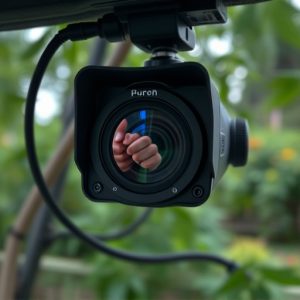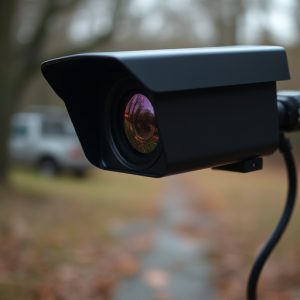Motion-Activated Spy Cameras: Balancing Tech, Ethics, and Longevity
Motion-activated spy cameras are energy-efficient home security devices that utilize infrared sensor…….
Motion-activated spy cameras are energy-efficient home security devices that utilize infrared sensors and image processing to detect motion, recording only when needed. Advances in miniaturization have led to their integration into everyday objects, but this raises ethical concerns about privacy and data security. Despite these issues, the technology offers practical benefits such as intruder deterrence, evidence collection, and remote property supervision, particularly useful in remote or elderly care scenarios. Manufacturers must balance discretion and durability through optimized component selection, durable design, and advanced battery technologies like lithium-ion or thin-film batteries to achieve prolonged battery life.
“Discover the evolving world of miniature surveillance with motion-activated spy cameras, seamlessly integrated into everyday home objects. This technology offers enhanced security and peace of mind, reacting instantly to movement. In this article, we explore the inner workings of these innovative devices, focusing on the delicate balance between miniaturization and extended battery life.
We’ll delve into the ethical implications and practical applications, shedding light on how motion-activated spy cameras are transforming home security while raising important questions about privacy.”
- Understanding Motion-Activated Spy Cameras: Unveiling the Technology
- Miniaturization and Battery Life: Balancing Discretion and Durability
- Ethical Considerations and Practical Applications in Home Objects
Understanding Motion-Activated Spy Cameras: Unveiling the Technology
Motion-activated spy cameras, also known as motion-sensing surveillance devices, are a popular choice for home security and spying due to their advanced technology and energy efficiency. The key feature that sets them apart is their ability to detect motion and automatically turn on, capturing video or still images when any movement is sensed. This innovative approach ensures that the camera only records when it’s needed, conserving battery life and storage space.
These cameras typically use a combination of sensors, including infrared technology and advanced image processing algorithms, to distinguish between real motion and false positives like pets or fluttering curtains. The battery life of these devices is a significant advantage, often designed to last for extended periods on a single charge, making them convenient for both indoor and outdoor surveillance without constant monitoring.
Miniaturization and Battery Life: Balancing Discretion and Durability
Miniaturization has revolutionized the world of surveillance, making it possible to hide cameras in everyday objects. However, as these devices become smaller, a key challenge arises: balancing discretion with durability. Motion-activated spy cameras, designed to blend seamlessly into home environments, must be compact yet capable of long-lasting battery life. The smaller the device, the more challenging it is to pack enough power for sustained operation without compromising aesthetics and functionality.
Manufacturers must carefully select components and optimize circuit designs to achieve this balance. Advanced battery technologies, such as lithium-ion or thin-film batteries, offer improved energy density, enabling longer recording times between charges. Additionally, power-saving features like motion detection sensors ensure that these miniature cameras only activate when necessary, extending their operational lifespan further.
Ethical Considerations and Practical Applications in Home Objects
The integration of miniature surveillance devices into everyday home objects raises several ethical considerations. Privacy is a paramount concern, as these cameras can capture and store intimate moments without the occupants’ knowledge or consent. This brings to light discussions around data security and protection, especially when connected to the internet for remote access. The potential for misuse or unauthorized surveillance is a significant worry, prompting debates about consumer rights and the need for stringent regulations.
Despite these ethical dilemmas, miniature surveillance devices offer practical applications in home security and monitoring. Motion-activated spy cameras with extended battery life can deter intruders, provide evidence during suspicious activities, and ensure the safety of residents. They are especially useful in remote areas or when homeowners are away, allowing them to keep an eye on their properties through live feeds and recorded footage. This technology also enables better assistance for the elderly or individuals with special needs who require constant supervision while maintaining a sense of independence.
The integration of miniature surveillance devices, particularly motion-activated spy cameras, into everyday home objects presents a fascinating blend of technology and discretion. As we’ve explored, these devices offer enhanced security through advanced motion sensors and improved battery life, ensuring they can operate undetected for extended periods. However, it’s crucial to navigate the ethical landscape carefully, considering privacy implications and using such tools responsibly. Balancing these factors will determine how effectively these innovative devices can contribute to home security while respecting personal boundaries.


